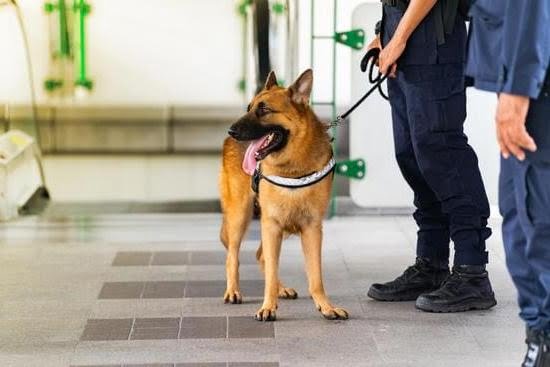How often should you train a dog is a question that all pet owners must consider when welcoming a new furry friend into their home. Training plays a crucial role in ensuring the well-being and behavior of dogs, helping them adapt to their environment and develop essential skills. Whether you have a playful puppy or a seasoned adult dog, regular training sessions are key to building a strong bond with your canine companion.
Training not only teaches dogs obedience and manners but also provides mental stimulation and physical exercise, contributing to their overall health and happiness. Consistent training sessions can help prevent behavioral issues such as aggression, anxiety, and destructive behavior, making life easier for both you and your furry friend. By investing time in training your dog, you are setting them up for success in various aspects of their life.
When determining how often to train your dog, it is essential to consider factors such as age, breed, temperament, and individual needs. Puppies may require frequent short training sessions throughout the day to build basic skills like potty training and socialization.
On the other hand, adult dogs may benefit from less frequent but more challenging training exercises to maintain their obedience and mental sharpness. Finding the right balance based on your dog’s specific requirements is crucial for achieving successful results in their training journey.
The Benefits of Regular Training for Dogs
Training your dog regularly is crucial to their overall well-being and development. Not only does regular training help establish a strong bond between you and your furry friend, but it also ensures they understand basic commands and boundaries. By investing time and effort into training your dog, you are setting them up for success in various situations, such as social interactions, obedience, and even safety.
One of the key benefits of regular training for dogs is improved communication. Through consistent training sessions, you are able to effectively communicate with your dog using verbal cues, hand signals, or gestures. This clear communication helps prevent misunderstandings and strengthens the connection between you and your pet. Additionally, training provides mental stimulation for your dog, keeping their mind engaged and reducing boredom or destructive behaviors.
When determining how often to train your dog, it’s important to consider factors such as age, breed, personality, and individual needs. Puppies may require more frequent training sessions to establish good habits and build a strong foundation. On the other hand, adult dogs may benefit from regular reinforcement of learned behaviors or more advanced training exercises. By understanding your dog’s specific requirements, you can tailor a training schedule that meets their needs effectively.
Factors to Consider When Determining Training Frequency
When determining how often to train a dog, there are several factors that need to be taken into consideration. One important factor is the age of the dog. Puppies have shorter attention spans and energy levels compared to adult dogs, so they may require shorter but more frequent training sessions. Adult dogs, on the other hand, can handle longer training sessions but may not need as many sessions per day.
Another factor to consider is the breed of the dog. Some breeds are known for their high energy levels and intelligence, which may require more frequent and challenging training sessions. Additionally, the temperament of the dog plays a role in determining training frequency. Dogs that are eager to learn and please their owners may benefit from more regular training sessions.
It is also important to consider your own schedule and lifestyle when deciding how often to train your dog. A consistent training routine is crucial for effective results, so it’s important to set aside dedicated time each day for training sessions. Whether you choose to train your dog once or twice a day, it’s essential to maintain a regular schedule to establish good habits and reinforce behaviors effectively.
| Factors to Consider | How Often Should You Train a Dog |
|---|---|
| Age of the Dog | Puppies might need shorter but more frequent sessions while adult dogs can handle longer sessions |
| Breed | High-energy breeds may require more frequent and challenging training sessions |
| Temperament | Dogs eager to learn may benefit from more regular training sessions |
By taking these factors into account, you can determine an appropriate training frequency that meets both your dog’s needs and fits into your schedule effectively. Consistency is key in any successful training program, so make sure to establish a routine that works for both you and your furry companion.
Basic Training Schedule for Puppies
Puppies are like sponges, ready to soak in new information and eager to learn. Training a puppy is essential for their development and will help them become well-behaved adult dogs. Establishing a basic training schedule from the early stages of your puppy’s life is crucial in shaping their behavior and ensuring they grow up to be obedient and well-adjusted pets.
Training Sessions
When it comes to training puppies, consistency is key. Short but frequent training sessions throughout the day work best for young pups with short attention spans. Aim for 5-10 minute sessions multiple times a day to keep your puppy engaged and prevent them from getting bored or overwhelmed. Remember that puppies have limited focus, so keeping training sessions brief and fun will yield better results.
Basic Commands
Start by teaching your puppy basic commands such as sit, stay, come, and down. These foundational commands will provide structure and set the tone for future training sessions. Repetition is essential in reinforcing these commands, so practice them consistently during each training session. Use positive reinforcement techniques such as treats, praise, and affection to encourage good behavior and establish a strong bond with your puppy.
Socialization
In addition to obedience training, socialization is a critical aspect of a puppy’s development. Exposing your pup to different people, animals, environments, sounds, and experiences early on will help prevent behavioral issues later in life.
Incorporate socialization exercises into your puppy’s daily routine to build their confidence and teach them how to interact with the world around them. Remember that every interaction is a learning opportunity for your puppy, so make sure they have positive experiences with new stimuli.
Advanced Training Schedule for Adult Dogs
Once your dog has mastered the basics, it is important to continue their training with more advanced commands and behaviors. Consistency is key when it comes to training adult dogs, so establishing a regular schedule is crucial. But how often should you train a dog that is no longer a puppy? Here are some guidelines to help you create an advanced training schedule for your adult canine companion:
- Set aside at least 15-20 minutes each day for training sessions. While puppies may require shorter, more frequent training sessions, adult dogs can benefit from longer, focused sessions.
- Focus on specific commands or behaviors that you want to reinforce or teach your dog. This can include advanced tricks, agility skills, or even behavior modifications such as leash walking or socialization.
- Consider incorporating mental stimulation activities into your dog’s training routine. Puzzle toys, scent work, or interactive games can help keep their minds sharp and engaged.
Training an adult dog requires patience and dedication, but the results can be incredibly rewarding. As with any training regimen, consistency is key. By setting aside time each day for focused training sessions and working on specific commands or behaviors, you can help your furry friend continue to grow and learn. Remember to always keep the sessions positive and rewarding for your dog to maintain their interest and motivation.
Remember that every dog is different, so you may need to adjust the frequency of your training sessions based on your dog’s individual needs and abilities. Pay attention to their behavior and progress during training sessions to determine if they need more frequent practice or if they are ready to move on to new challenges. By staying attuned to your dog’s cues and needs, you can create an advanced training schedule that works best for them.
Tips for Maintaining a Consistent Training Routine
Consistency is key when it comes to training your dog, regardless of their age or breed. Maintaining a regular training routine not only helps reinforce good behavior but also strengthens the bond between you and your furry companion. Here are some helpful tips to ensure you stay on track with your dog’s training regimen:
Set Aside Dedicated Time Each Day
To establish a consistent training routine, it’s essential to carve out specific time slots each day for training sessions. This could be during your morning walk, in the afternoon at the park, or before bedtime. By creating a schedule and sticking to it, your dog will come to expect and anticipate their training sessions.
Use Positive Reinforcement
Positive reinforcement is an effective training technique that involves rewarding your dog for good behavior with treats, praise, or toys. Consistently rewarding desirable actions encourages your pup to repeat them in the future. Remember to praise and reward your dog immediately after they display the desired behavior to reinforce its importance.
Be Patient and Stay Consistent
Training takes time, patience, and consistency. Avoid getting frustrated if progress seems slow or if your dog doesn’t pick up on commands right away. Stay positive, keep practicing, and remain consistent in your approach. Repetition is key to helping your dog learn and internalize new behaviors.
By following these tips for maintaining a consistent training routine, you can help ensure that your dog receives the proper guidance and instruction needed for their development. Remember that every pup is different, so adjust the frequency of training sessions according to their individual needs and progress. Ultimately, consistency and patience are crucial elements in building a well-trained and well-behaved canine companion.
Signs That Indicate Your Dog Needs More Frequent Training
Training a dog is essential for their well-being and the harmonious relationship between pet and owner. However, determining how often should you train a dog can be a challenging task. There are several factors to consider, such as the age of the dog, their breed, personality, and current level of training. Here are some signs that may indicate your dog needs more frequent training:
- Your dog seems bored or disinterested during training sessions
- Behavioral issues are persisting despite previous training efforts
- Your dog is displaying signs of anxiety or fear in certain situations
- They are not responding consistently to commands or cues
If you notice any of these signs in your dog, it may be time to increase the frequency of your training sessions. This will help address any underlying issues and reinforce good behavior.
It is important to remember that every dog is unique and may require different levels of training. While some dogs may thrive with daily training sessions, others may do well with a few short sessions spread throughout the week. Pay attention to your dog’s responses during training sessions and adjust the frequency accordingly to ensure they are engaged and making progress.
Common Mistakes to Avoid When Training Your Dog
Training your dog is a crucial aspect of their overall well-being and development. However, it is essential to understand the common mistakes that pet owners make during the training process to ensure effective and positive outcomes for your furry friend.
One common mistake to avoid when training your dog is inconsistency. Dogs thrive on routine and consistency, so it is important to maintain a regular training schedule. This consistency helps them understand what is expected of them and reinforces good behavior. Inconsistency can lead to confusion and frustration for your dog, hindering the training progress.
Another mistake to avoid is using punishment as a primary training method. While it may be tempting to use punishment when your dog misbehaves, it can actually do more harm than good. Positive reinforcement has been proven to be a more effective and humane way to train dogs. Rewarding good behavior with treats, praise, or playtime helps reinforce that behavior, making it more likely to be repeated in the future.
Lastly, overlooking the importance of mental stimulation in training can be a critical mistake. Dogs need both physical exercise and mental stimulation to stay happy and healthy. Implementing interactive toys, puzzle games, or obedience training exercises can help keep your dog mentally engaged and prevent behavioral issues caused by boredom or lack of mental stimulation.
| Training Mistakes | Impact |
|---|---|
| Inconsistency | Confusion and hindered progress |
| Using punishment | Can do more harm than good |
| Lack of mental stimulation | Causes behavioral issues due to boredom |
Conclusion
Training your dog is a crucial aspect of responsible pet ownership. It not only helps in teaching them manners and obedience but also strengthens the bond between you and your furry companion. The question of “how often should you train a dog” is one that varies depending on factors such as age, breed, and individual needs. Finding the right training balance for your dog is essential to ensure their well-being and happiness.
When determining how often to train your dog, it is important to consider their age and stage of development. Puppies, for example, require more frequent short training sessions to help them learn basic commands and behaviors. On the other hand, adult dogs may benefit from less frequent but more advanced training sessions focusing on specific skills or commands. By understanding your dog’s needs and abilities, you can tailor a training schedule that works best for them.
Maintaining a consistent training routine is key to success when it comes to training your dog. Set aside dedicated time each day for training sessions and practice patience and persistence. Remember to use positive reinforcement techniques, such as treats or praise, to motivate your dog during training sessions. By creating a rewarding experience for your pet, they will be more likely to engage with the training process effectively.
Frequently Asked Questions
What Is the Best Frequency for Dog Training?
The best frequency for dog training depends on the specific needs and abilities of the dog. Consistency is key, so regular short training sessions a few times a week can be effective in reinforcing behaviors.
Is Dog Training Once a Week Enough?
Dog training once a week may not be enough for optimal results, especially for complex commands or behavioral issues. More frequent sessions allow for better retention and faster progress in learning new skills.
How Many Repetitions Does It Take for a Dog to Learn Something?
The number of repetitions it takes for a dog to learn something varies depending on the individual dog and the complexity of the behavior. Generally, dogs benefit from consistent repetition over time to solidify their understanding and mastery of a command or skill.

Welcome to the blog! I am a professional dog trainer and have been working with dogs for many years. In this blog, I will be discussing various topics related to dog training, including tips, tricks, and advice. I hope you find this information helpful and informative. Thanks for reading!





